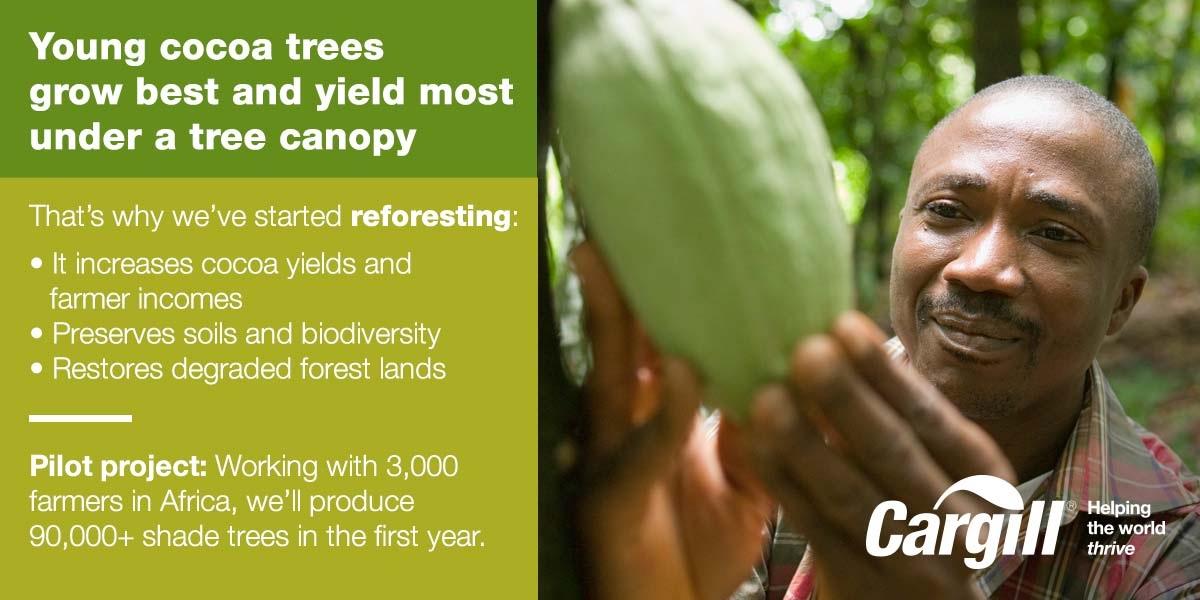6 Ways Cargill Is Protecting Forests in Its Cocoa Supply Chain

Stopping deforestation in cocoa begins with helping farmers improve their livelihoods. That is the approach Cargill is taking as we continue to deliver on our promise of ending deforestation in all of our operations, and it is especially true in cocoa.
With the Cargill Cocoa Promise, established in 2012, we committed to improving cocoa farmers’ lives and strengthening communities across five origin countries – Ghana, Cameroon, Côte d’Ivoire, Indonesia and Brazil. In doing so, we not only help secure the future of cocoa and chocolate, we are also taking steps forward towards preserving vital forest lands.
Ending deforestation in cocoa is inextricably linked to economic, political and social factors. That is why we are working across the sector, with governments, civil society, non-governmental organizations, farmer cooperatives and even our competitors, to improve farmer livelihoods and sustain the land for generations to come.
In 2017, we co-founded the Cocoa and Forests Initiative (CFI), a collective effort of 34 chocolate and cocoa companies, the World Cocoa Foundation and the IDH Sustainable Trade Initiative, focused on ending deforestation in cocoa supply chains in Côte d’Ivoire and Ghana.
Here is some of the other work Cargill is doing to protect forests in its cocoa supply chains:
- We trained more than 90,000 farmers on sustainable agricultural practices and growing techniques, helping them produce more on the same amount of land without encroaching on forests.
- Farmers have begun receiving premium payments for sustainable cocoa. A payment of 2 millionGhanaian cedis (451,000 U.S. dollars) was made in September 2017, showing a tangible link between protecting the land and improved farmer incomes.
- Because cocoa trees grow best and yield most in the shade, we are making an effort to reforest. This will boost farmer incomes, create animal habitat, preserve soils and restore degraded forest lands. We have started a pilot project with 3000 farmers in Côte d’Ivoire who will produce more than 90,000 shade trees in the first year.
- We established a three-year partnership with The Nature Conservancy in Brazil to replant areas of land that have been cleared of forests, as well as growing 1,000 hectares of cocoa using the forest canopy as shade protection.
- Thanks to our work with civil society and third-party certifiers since 2008, our cocoa supply from Côte d’Ivoire will be 70 percent certified traceable by the end of 2018.
- In collaboration with the World Resources Institute, we have assessed more than 2.3 million hectaresof land within our cocoa sourcing footprint, using GPS technology to evaluate habitat types and tree cover loss. This will help us focus our efforts protecting forests and ensuring sustainable sourcing of cocoa.

